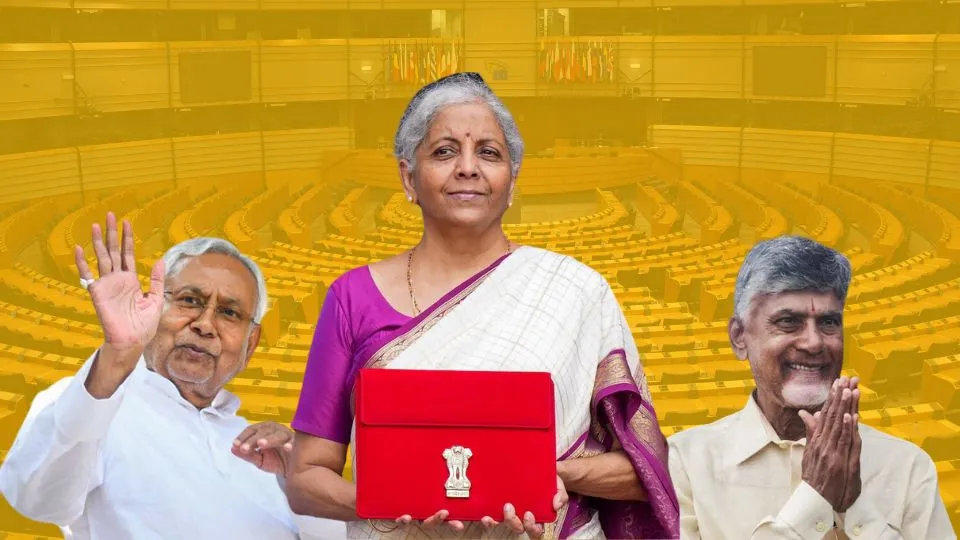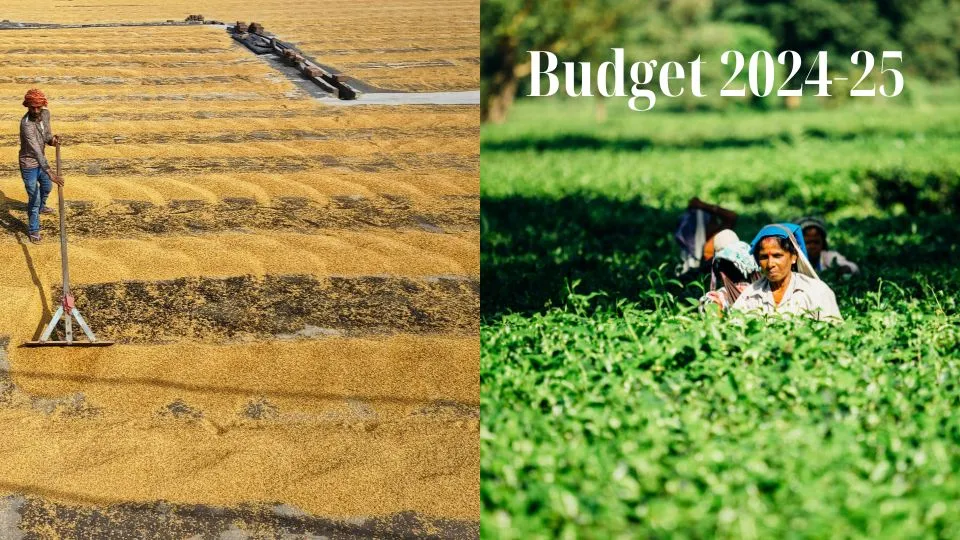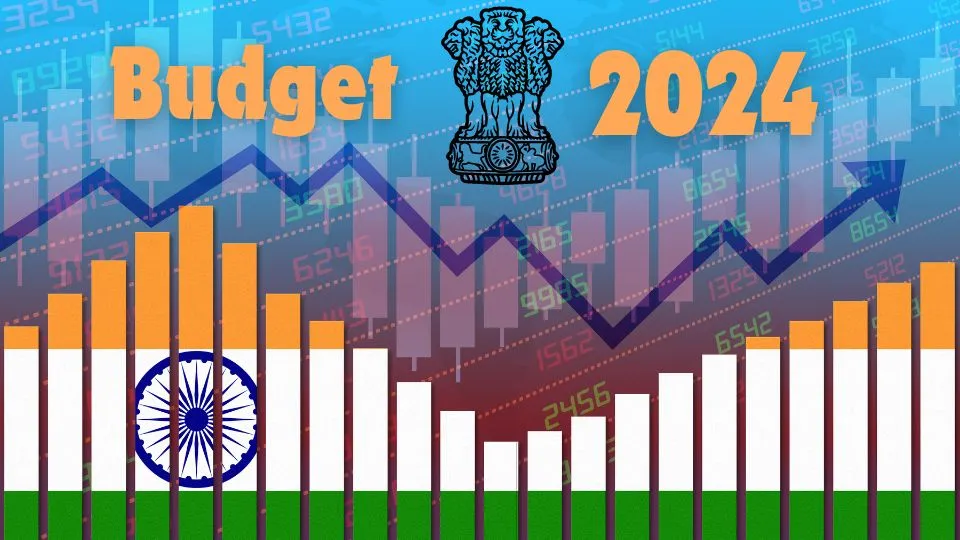On July 23, 2024, the Union Budget 2024-25 which was presented by Finance Minister Nirmala Sitharaman, plans to simplify and rationalize the tax structure. It will expand the Goods and Services Tax (GST) to remaining sectors. This move aims to build on the success of GST and bring more sectors under its umbrella.

Medicines and Medical Equipment
Three cancer drugs – TrastuzumabDeruxtecan, Osimertinib and Durvalumab, are now fully exempt from customs duty. Changes in Basic Customs Duty (BCD) on x-ray tubes and flat panel detectors for use in medical x-ray machines are part of the Phased Manufacturing Programme.
Also Read | Kotak Mahindra Bank Pulled in Adani-Hindenburg Controversy: Check the Saga of Accusations & Clarifications
Mobile Phones and Related Parts
The BCD on mobile phones, mobile Printed Circuit Board Assemblies (PCBA) and mobile chargers has been reduced to 15 percent.
Precious Metals
Customs duties on gold and silver have been reduced to 6 percent. Custom Duty on platinum is reduced to 6.4 percent.
Other Metals
The BCD on ferro nickel and blister copper has been removed. The BCD on ferrous scrap and nickel cathode has also been removed. A concessional BCD of 2.5 percent is now applicable on copper scrap.
Electronics and Chemicals
The BCD on oxygen-free copper used in the manufacture of resistors has been removed. But this is subject to conditions. The BCD on ammonium nitrate has been increased from 7.5 to 10 percent.
Plastics and Telecommunication Equipment
The BCD on PVC flex banners has been increased from 10 to 25 percent. For specified telecom equipment, the BCD on PCBA has been increased from 10 to 15 percent.
Trade Facilitation
To promote domestic aviation and boat and ship Maintenance, Repair, and Overhaul (MRO), the time period for the export of goods imported for repairs has been extended from six months to one year. The time-limit for re-import of goods for repairs under warranty has been extended from three to five years.
Critical Minerals and Solar Energy
Twenty-five critical minerals have been fully exempted from customs duties. The BCD on two critical minerals has been reduced. Capital goods for use in the manufacture of solar cells and panels are now exempt from customs duty.
Marine Products
The BCD on certain broodstock, polychaete worms, shrimp and fish feed has been reduced to 5 percent. Various inputs for the manufacture of shrimp and fish feed have been exempted from customs duty.
Leather and Textile
The BCD on real down filling material from duck or goose has been reduced. The BCD on methylene diphenyl diisocyanate (MDI) for the manufacture of spandex yarn has been reduced from 7.5 to 5 percent.
Simplifying Direct Taxes and Enhancing Services
Simplification Efforts
The government continues efforts to simplify taxes, improve taxpayer services, provide tax certainty and reduce litigation. In FY23, 58 percent of corporate tax was collected from the simplified tax regime. More than two-thirds of taxpayers availed the simplified tax regime for personal income tax in FY24.
Charities and TDS Simplification
Two tax exemption regimes for charities will be merged into one. The 5 percent TDS rate on many payments will be merged into a 2 percent TDS rate. The 20 percent TDS rate on the repurchase of units by mutual funds or UTI has been withdrawn. The TDS rate on e-commerce operators has been reduced from 1 to 0.1 percent. The delay in the payment of TDS up to the due date of filing the statement has been decriminalized.
Reassessment Simplification
Assessments can now be reopened beyond three years up to five years from the end of the Assessment Year only if the escaped income is INR 50 lakh or more. In search cases, the time limit has been reduced from ten to six years before the year of the search.
Rationalization of Capital Gains
Short-term gains on certain financial assets will attract a tax rate of 20 percent. Long-term gains on all financial and non-financial assets will attract a tax rate of 12.5 percent. The exemption limit of capital gains on certain financial assets has been increased to INR 1.25 lakh per year.
Digitalization of Services
All remaining services of Customs and Income Tax, including rectification and orders giving effect to appellate orders, will be digitalized over the next two years.
Litigation and Appeals
The ‘Vivad Se Vishwas Scheme, 2024’ aims to resolve income tax disputes pending in appeal. Monetary limits for filing direct taxes, excise, and service tax-related appeals in Tax Tribunals, High Courts, and the Supreme Court have been increased to INR 60 lakh, INR 2 crore, and INR 5 crore respectively. Safe harbour rules have been expanded to reduce litigation and provide certainty in international taxation.
Employment and Investment
The angel tax for all classes of investors has been abolished to bolster the start-up ecosystem. A simpler tax regime for foreign shipping companies operating domestic cruises aims to promote cruise tourism in India. Safe harbour rates for foreign mining companies selling raw diamonds in the country have been introduced. The corporate tax rate on foreign companies has been reduced from 40 to 35 percent.
Deepening Tax Base
The Security Transactions Tax on futures and options of securities has been increased to 0.02 percent and 0.1 percent respectively. Income received on the buyback of shares in the hands of the recipient will be taxed.
Social Security Benefits
The deduction of expenditure by employers towards the National Pension System (NPS) has been increased from 10 to 14 percent of the employee’s salary. Non-reporting of small movable foreign assets up to INR 20 lakh has been de-penalized.
Other Proposals
The equalization levy of 2 percent has been withdrawn.
Changes in Personal Income Tax
The standard deduction for salaried employees has been increased from INR 50,000 to INR 75,000. The deduction on family pensions for pensioners has been enhanced from INR 15,000 to INR 25,000. The revised tax rate structure is as follows:
- 0-3 lakh rupees: Nil
- 3-7 lakh rupees: 5 percent
- 7-10 lakh rupees: 10 percent
- 10-12 lakh rupees: 15 percent
- 12-15 lakh rupees: 20 percent
- Above 15 lakh rupees: 30 percent
Salaried employees in the new tax regime can save up to INR 17,500 in income tax.
Also Read | Patanjali Foods shall Acquire Non-Food Business of Patanjali Ayurved for INR 1,100 Crore
Analytical Side
The proposed changes in indirect and direct taxes reflect a balanced approach to stimulate economic growth and improve the ease of doing business while ensuring revenue generation for development and welfare schemes. The focus on simplifying tax structures, reducing litigation, and enhancing taxpayer services will likely encourage compliance and improve the investment climate.
The exemptions and reductions in customs duties across various sectors, including critical minerals, medical equipment, electronics and solar energy, aim to boost domestic manufacturing and support key industries. The changes in personal income tax under the new tax regime provide significant relief to salaried employees, fostering a more taxpayer-friendly environment. Overall, these measures indicate a forward-looking strategy to modernize the tax system and drive economic progress.
About the Author
Mr. Radhesh Tarang Shah, is a management student at Institute of Management, Nirma University. He has a passion for writing articles and poems. He has experience as a financial analyst, author, news writer, marketer and social worker.











